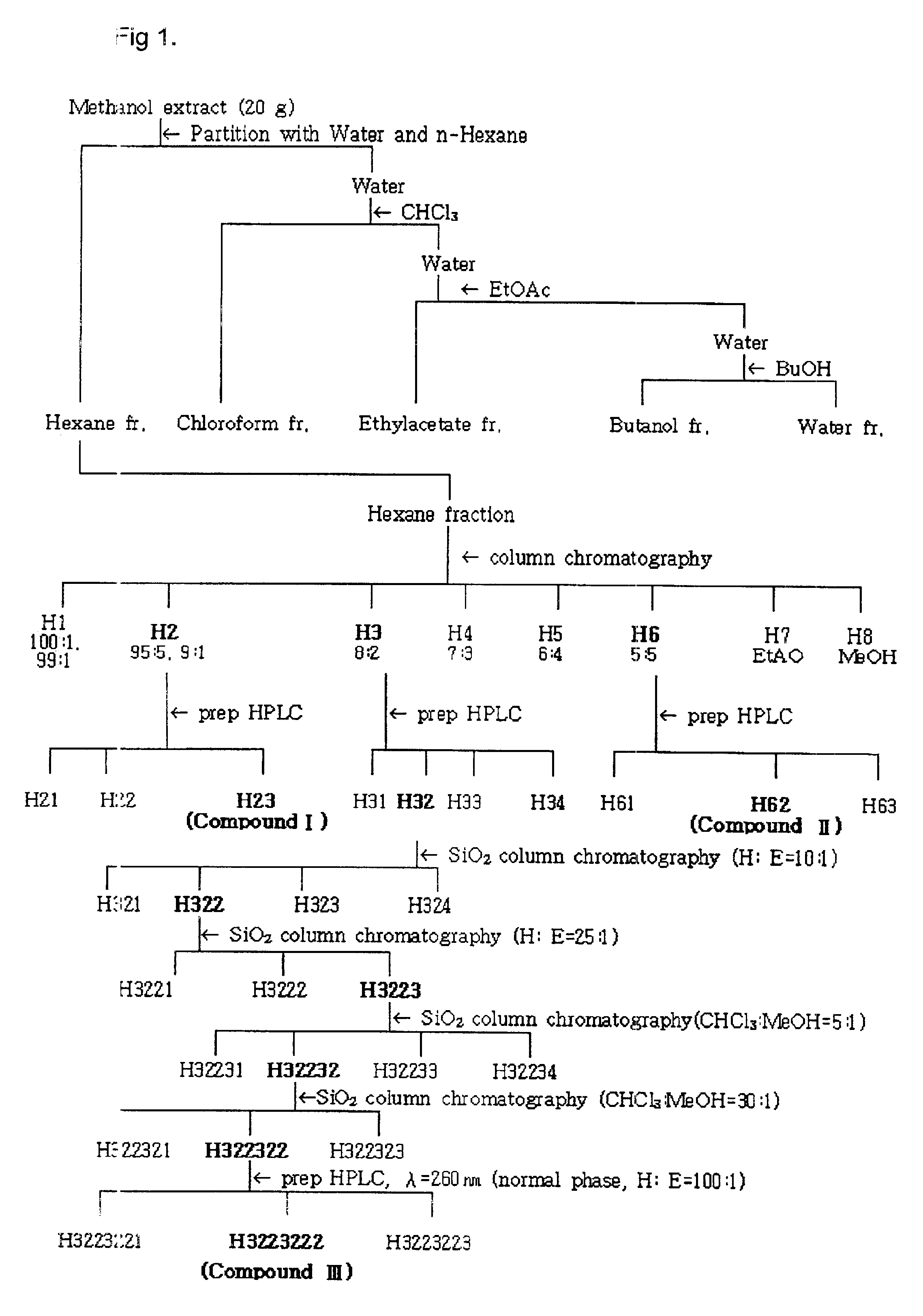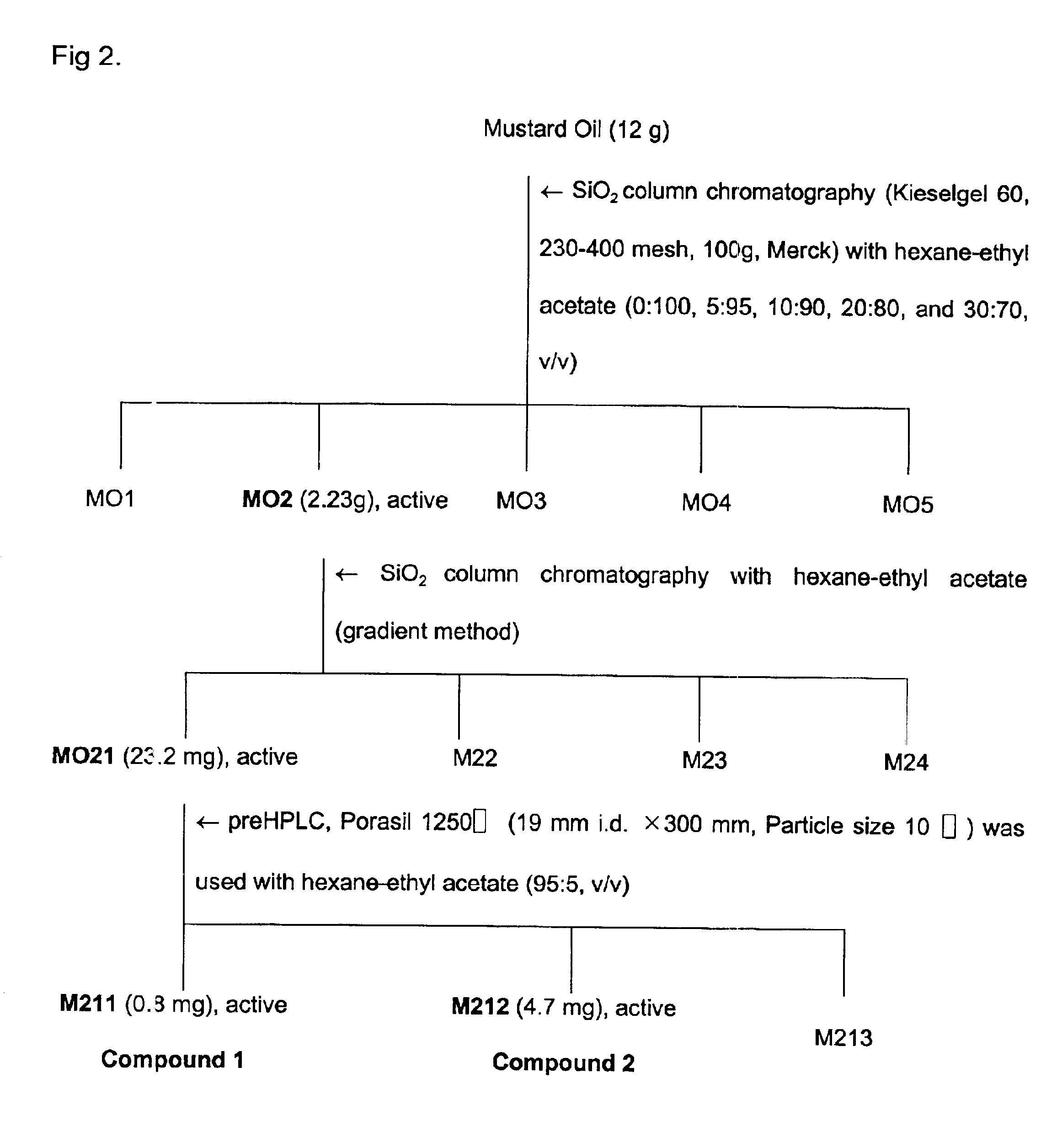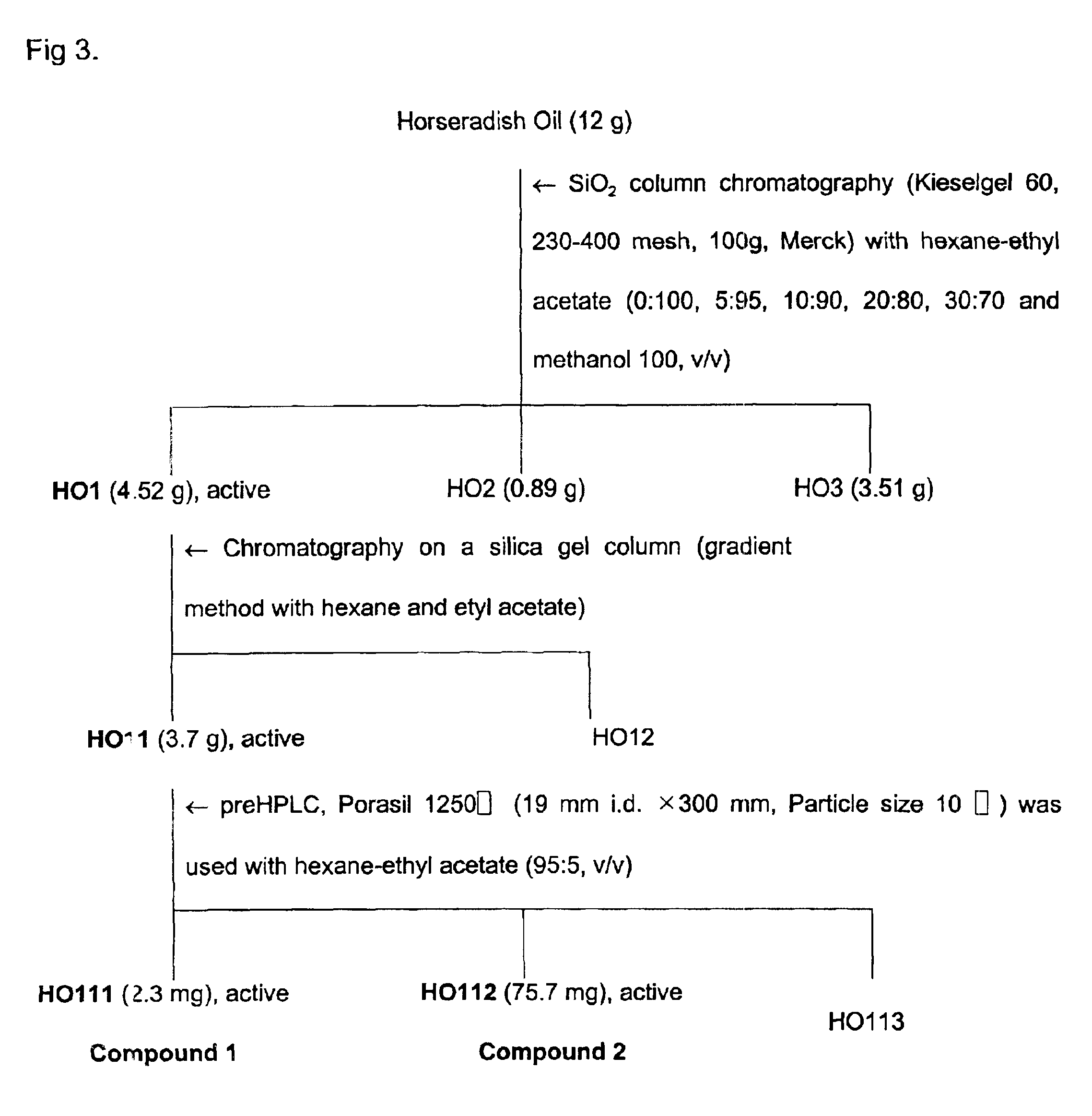Insecticidal composition derived from plants
a technology of insecticidal composition and plant, which is applied in the field of insecticidal composition isolated from plants, can solve the problems of affecting the health of people, affecting the environment and environment, and affecting the use of homes, so as to improve the activity, increase the insecticidal activity, and improve the effect of activities
- Summary
- Abstract
- Description
- Claims
- Application Information
AI Technical Summary
Benefits of technology
Problems solved by technology
Method used
Image
Examples
example 1
Preparation of Sample, and Plants and Oils Having Acaricidal Activity
Plants were screened for acaricidal activity and found that Paeonia suffruticosa, Cnididum officinale, Cinnamomum cassia, cinnamon, mustard and horseradish have insecticidal activity, especially acaricidal activity.
The Methanol Extracts
300 g of each of Paeonia suffruticosa, Cnidium officinale, and Cinnamomum cassia was finely powdered using a mixer, and the resultant was blended with 500 ml of methanol for 3 days in a 500 ml Erlenmeyer flask and extracted twice with methanol at room temperature and pooled. The combined filtrate was concentrated in vacuo at 35° C. Cinnamon oil, mustard oil and horseradish oil used in the present invention were obtained from cinnamon, mustard and horseradish using steam distillation.
example 2
The acaricidal compounds of the methanol extracts from Cinnamomum cassia prepared by Example 1 were isolated and purified. 20 g of the methanol extracts were suspended in 800 ml of distilled water and 800 ml of n-hexane. The mixture was transferred to a separatory funnel (2 ml), capped, and after shaking well, it was separated into a water portion and a hexane portion. After 30 min, a first hexane portion was separated using another separatory funnel. The water portion was mixed with 800 ml of hexane and separated to a second hexane portion in the same manner. The remaining water portion was blended with 800 ml of chloroform, capped, and after shaking well, it was separated into a water portion and a chloroform portion. After 30 min, a first chloroform portion was separated. The water portion was mixed with 800 ml of chloroform and separated to a second chloroform portion in the same manner as separating the hexane portion. The remaining water portion was blended with 800 ml of ethy...
example 3
Isolation of an Acaricidal Compound
(a) Between the hexane portion and the chloroform portion prepared by Example 2, the acaricidal compounds were isolated from the hexane portion. FIG. 1 shows the procedure that isolates the active compounds of the hexane portion derived from Cinnamomum cassia bark.
1st Chromatography
The hexane portion (10 g) was chromatographed on a silica gel column (Merck 70-230 mesh, 600 g, 5.5 i.d.×70 cm), and successively eluted with a stepwise gradient of hexane-ethyl acetate. The ratios of hexane to ethyl acetate used in the stepwise gradient were 100:1, 99:1, 95:5, 90:10, 80:20, 70:30, 60:40, 50:50 and 0:100, and fractions of each ratio were collected as H1, H2, H3, H4, H5, H6, H7 and H8 respectively. The eight fractions were tested as to their mite control efficacies by the acaricidal test of Test 1, and as a result, the three fractions, H2 (40.1% yield), H3 (4.2% yield) and H6 (8.8% yield) that had acaricidal activity were isolated. Each fraction was analy...
PUM
 Login to View More
Login to View More Abstract
Description
Claims
Application Information
 Login to View More
Login to View More - R&D
- Intellectual Property
- Life Sciences
- Materials
- Tech Scout
- Unparalleled Data Quality
- Higher Quality Content
- 60% Fewer Hallucinations
Browse by: Latest US Patents, China's latest patents, Technical Efficacy Thesaurus, Application Domain, Technology Topic, Popular Technical Reports.
© 2025 PatSnap. All rights reserved.Legal|Privacy policy|Modern Slavery Act Transparency Statement|Sitemap|About US| Contact US: help@patsnap.com



